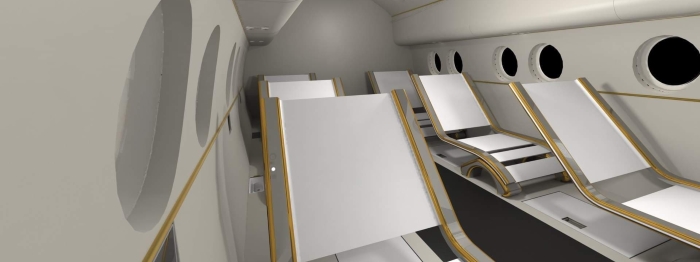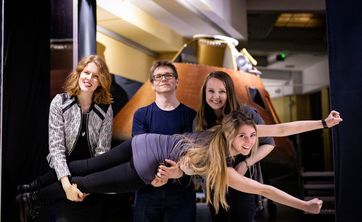YOUR BROWSER IS OUT-OF-DATE.
We have detected that you are using an outdated browser. Our service may not work properly for you. We recommend upgrading or switching to another browser.
Date: 14.06.2019 Category: general news, student activity
15 academic teams from all over Europe presented their projects in the final of the competition organized in Paris by Astronaute Club Européen. The judges decided that the best entry was the model of a suborbital plane cabin developed by the students of Wrocław University of Science and Technology.

Student Aerospace Challenge, an annual competition for students from the European Space Agency (ESA) member states, is organized by Astronaute Club Européen (ACE), a French association promoting space tourism. 36 teams from all over Europe entered this year's edition of the competition. The best fifteen presented their projects in Paris during Suborbital Day.
The participants in the competition were asked to choose one of ten issues related to suborbital flights. These concerned subjects including the economic aspects of flight, aerodynamics and flight control, as well as medical issues and air traffic control. Students of Wrocław University of Science and Technology - representing it under the name Innspace group - focused on the problems related to the crew cabin and the equipment located inside. The model was developed by Beata Suścicka from the Faculty of Architecture, Magdalena Łabowska from the Faculty of Mechanical Engineering, Justyna Pelc from the Faculty of Computer Science and Management, and Piotr Torchała from the Faculty of Mechanical Engineering. Their project was recognized as the best, and as an award, the students will be able to present it at the November industry conference of the European Space Agency to be held in Belfast.
 - We didn't expect to win the Grand Prix. The competition was extremely strong! - said Justyna Pelc shortly after the announcement of the results. The judges praised our in-depth research. We even heard that so far, none of the teams in the competition has done such thorough research into the subject as we. They also asked us how risk analysis had helped us with the design and why we gave up the passenger suits, so we explained that the conditions in the cabin guarantee safety, and in addition, the flight participants have enough time to put on a helmet in case of decompression, as it usually lasts quite a long time.
- We didn't expect to win the Grand Prix. The competition was extremely strong! - said Justyna Pelc shortly after the announcement of the results. The judges praised our in-depth research. We even heard that so far, none of the teams in the competition has done such thorough research into the subject as we. They also asked us how risk analysis had helped us with the design and why we gave up the passenger suits, so we explained that the conditions in the cabin guarantee safety, and in addition, the flight participants have enough time to put on a helmet in case of decompression, as it usually lasts quite a long time.
The plane whose cabin was designed by the students would be 15 metres long and have wings spanning 10 metres. Without fuel, it would weigh 8 tons, and with it as many as 20 tons. It would be exposed to g-loads of about 3g, and its passengers would stay in zero gravity for about three minutes. The students had to make sure that their cabin designs allow for life support systems, interior pressure, as well as ejection systems, among other things. The cabin was, of course, meant to ensure safety, but it was also important to design it in a way ensuring that the flight, expected to last about an hour and a half, is an exceptionally intensive experience for its passengers.
For more information about the cabin design, visit the Innspace group's website.
Our site uses cookies. By continuing to browse the site you agree to our use of cookies in accordance with current browser settings. You can change at any time.